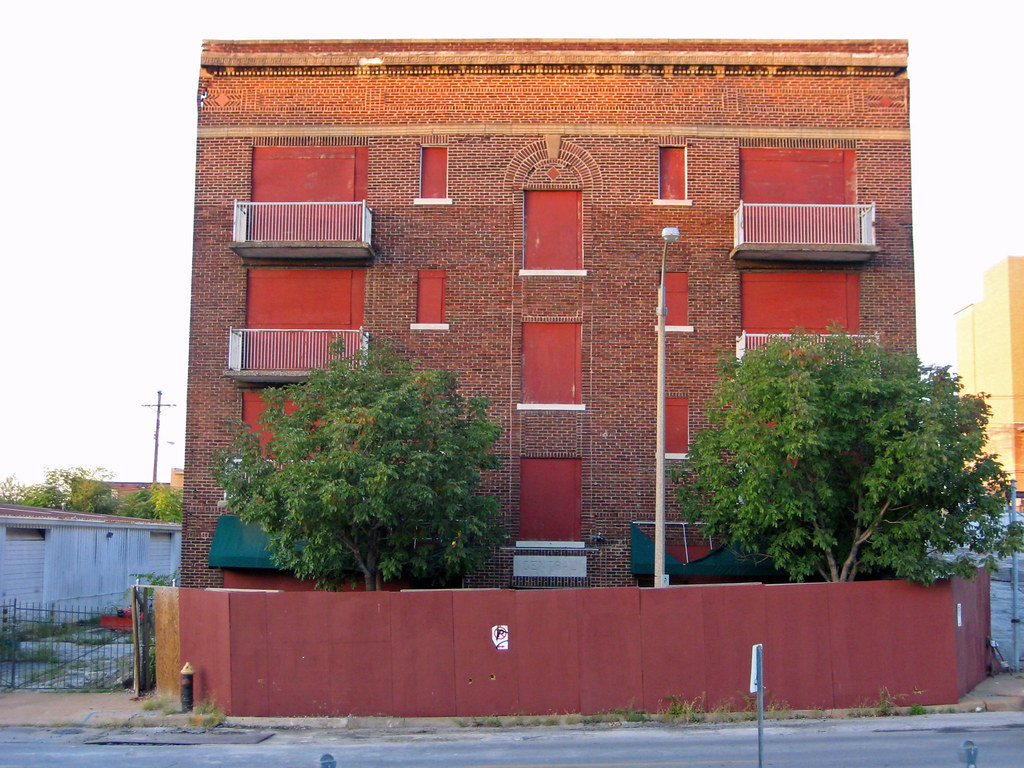 Back on Olive, just down the block from the soon to be gone Central Apartments stood this beautiful building. The building was one of most flamboyant left on the block in the mid 90's, but like most of Olive for several blocks in each direction it stood abandoned and boarded up. In the summer of 1996 the building had a fire that damaged the 2nd and 3rd floors. Despite the fact that the beautiful facade was still fully intact, the building was demolished a few months later.
Back on Olive, just down the block from the soon to be gone Central Apartments stood this beautiful building. The building was one of most flamboyant left on the block in the mid 90's, but like most of Olive for several blocks in each direction it stood abandoned and boarded up. In the summer of 1996 the building had a fire that damaged the 2nd and 3rd floors. Despite the fact that the beautiful facade was still fully intact, the building was demolished a few months later.Next door to the west, (partially visible in the photo above) is the former home of the Wolfner Memorial Library for the Blind, which now stands isolated near the western end of the block. A few years ago, the buildings on the two lots west, from the Wolfner to the corner, were demolished as well (unfortunately I didn't get any photos of these). The former library has also been abandoned for many years, but was listed on the National Register in June 2005. It acquired recently by Grand Center, Inc., and there is now a small sign on the front that reads "Wolfner Lofts", giving hope that it will not meet the same fate as its neighbors on each side. To see more photos of the former Wolfner building , including interior, see the recently revived pages of Sonic Atrophy The actual Wolfner Memorial Library is now located in Jefferson City, MO.












